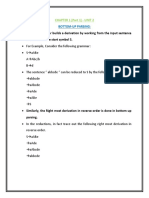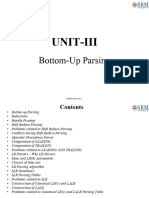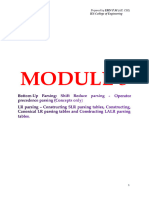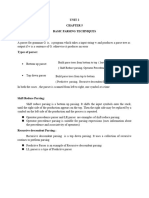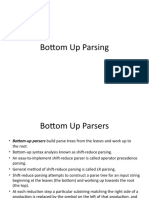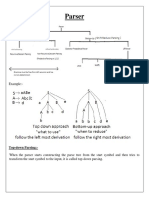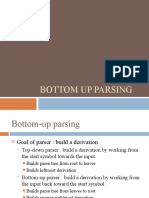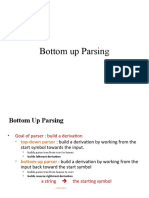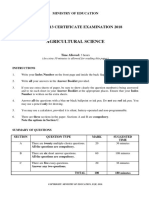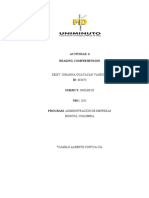0% found this document useful (0 votes)
32 views8 pagesr20 CD Unit-3 Part 2
The document discusses bottom-up parsing techniques, particularly focusing on shift-reduce parsing and operator precedence parsing. It explains concepts such as sentential forms, handles, and conflicts that may arise during parsing, along with examples and algorithms for constructing parsing tables. Additionally, it compares LR and LL parsers, highlighting the advantages of LR parsing methods for recognizing programming language constructs.
Uploaded by
G RamyasriCopyright
© © All Rights Reserved
We take content rights seriously. If you suspect this is your content, claim it here.
Available Formats
Download as PDF, TXT or read online on Scribd
0% found this document useful (0 votes)
32 views8 pagesr20 CD Unit-3 Part 2
The document discusses bottom-up parsing techniques, particularly focusing on shift-reduce parsing and operator precedence parsing. It explains concepts such as sentential forms, handles, and conflicts that may arise during parsing, along with examples and algorithms for constructing parsing tables. Additionally, it compares LR and LL parsers, highlighting the advantages of LR parsing methods for recognizing programming language constructs.
Uploaded by
G RamyasriCopyright
© © All Rights Reserved
We take content rights seriously. If you suspect this is your content, claim it here.
Available Formats
Download as PDF, TXT or read online on Scribd
/ 8











